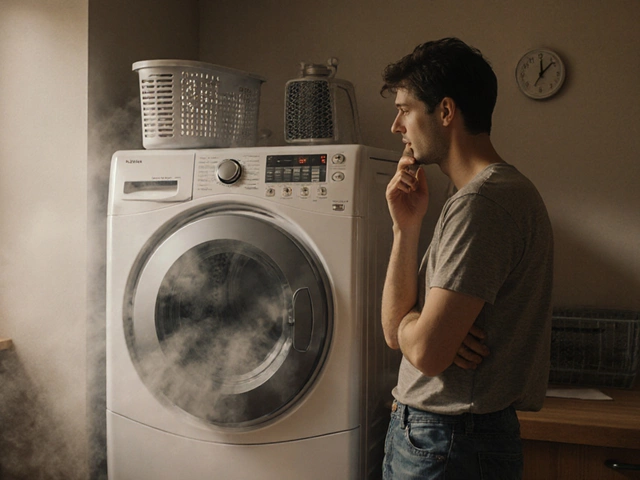How Long Do Pressure Cookers Last? Expert Advice and Lifespan Tips
August 8 2025Cost‑Effective Appliance Repair & Replacement Guide
If you’ve ever stared at a broken boiler, a noisy extractor fan, or a fridge that won’t chill, you know the cost‑panic that follows. The good news is you don’t have to break the bank every time something goes wrong. By checking a few things yourself and knowing the right moment to call a pro, you can keep your home running smoothly without overspending.
When to Repair and When to Replace
First, ask yourself three quick questions: Is the appliance under warranty? How old is it? What’s the repair cost compared to a new model?
Most manufacturers back a two‑year guarantee, so if your issue falls inside that window, a repair is usually a no‑brainer. Anything older than 10‑12 years, especially boilers, water heaters, or freezers, often costs more to fix than to replace. For example, a 15‑year‑old boiler may need a new heat exchanger, which can run into the hundreds. Upgrading to a modern, energy‑efficient unit could save you on bills and future repairs.
When the repair quote hits 50‑60 % of the price of a new appliance, it’s time to think replacement. This rule helps you avoid a cycle of repeat fixes that drain your wallet.
Simple DIY Checks That Save Money
Before you dial a trade, try these quick tests. They take minutes and can spot the easy fixes that most people miss.
Extractor fans. Turn the fan on and listen. A rattling sound often means a loose blade – tighten it with a screwdriver. If the fan runs but airflow feels weak, clean the filter and the vent cover. A clogged filter is a common cause of poor performance and costs nothing to fix.
Oven heating element. Light the oven and watch for a red glow. No glow? Unplug, remove the element and look for broken wires or burnt spots. Replacing a faulty element can be under £30, versus buying a whole new oven.
Water heater. Feel the hot water at the tap. If it’s lukewarm, flush the tank to clear sediment. Sediment builds up over years and forces the heater to work harder, raising energy bills. A simple drain and refill can extend life by several years.
Freezer. Check the seal for gaps by sliding a piece of paper between the door and frame. If it slides out easily, the seal is failing and the freezer will work harder. Replacing the gasket is a cheap fix that prevents pricey electricity spikes.
These checks cover many of the posts on our site – from boiler lifespan tips to dishwasher repair guides. They give you a solid starting point and often let you decide if a professional call is truly needed.
Remember, safety first. If you ever smell gas, hear sparks, or are unsure about electrical work, stop and call a certified engineer. It may cost a little more now, but it protects you from bigger problems later.
By blending a quick DIY glance with the smart replace‑vs‑repair rule, you’ll keep your home running efficiently without blowing your budget. Save the money, stay warm, and enjoy the peace of mind that comes from knowing when to fix and when to upgrade.
 7 Mar
7 Mar
Is It Worth It to Repair an Electric Stove?
Electric stoves are essential kitchen appliances, but when they break down, deciding whether to repair them can be confusing. This article explores the practicality and cost-effectiveness of fixing an electric stove, while offering practical tips for troubleshooting common issues. Learn about the signs that signal the need for repair versus replacement, and gain insights into potential costs. Additionally, discover easy DIY fixes that may prolong your stove’s life and save you money. Get informed and make the best choice for your home.
Read More...



